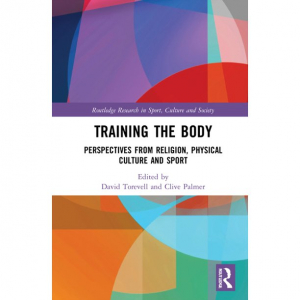Making Us Better? A Look at Tech and Spirituality in Sport

We are making sport and athletes better and better. Technology is giving us more ways to improve equipment, training, and our bodies. ….Or is it? Let’s take a quick look at a few ways we might be able to make sport and athletes better.
We know that anabolic steroids and other banned doping substances do damage to the body and are against the rules. But there are many other technologies that may be used in sport in which we are not yet as clear about their possible impacts. For example, moral bioenhancement is about making us better morally. This is a very contentious topic. Academics ask questions about what we mean by morality and whether it is truly possible to use biological interventions like brain stimulation or medicine to have effects that could be called moral. One example of a pharmaceutical substance that could possibly be used to make us better morally is oxytocin. Oxytocin is a hormone that bonds us more deeply to people who are close to us. It increases altruism including kindness and support that we extend to those close to us. On the more problematic side, oxytocin may increase hostility to people who are not close to us. In sport this might mean that we bond even more deeply to teammates and become more hostile to the opposition. Add to this the possible development of genetic modification technologies that may decrease feelings of remorse or pain, and athletes may become that much more ruthless to the opposition. Or we may be able to use genetic modification technologies that make us stronger and faster. That might sound good at first. Surely this will increase our chances of winning!
But…. it may also make sport more brutal and less enhancing of overall well-being. The possibilities for relational unity that sport provides likely will be damaged by tech that widens gaps between competitors or that makes athletes so much different from their fans that we really can’t relate to elite athletes anymore. Nelson Mandela promoted surprising, radical hope and healing through the Invictus World Cup rugby games in 1995, hosted by South Africa. The country began to bridge the severe damage done by brutal Apartheid culture and joined together to pull for a win. Opportunities to unite us through sport are a big part of the spiritual hope possible in sport. But if sport becomes more about winning alone and less about communal gathering and celebration of human effort, then advances in tech may damage the other goods in sport.
We need to be careful with our creation and use of sports equipment and training tech that may increase winning but may decrease joy and hope. That sense of awe and transcendence that we get sometimes in sport may be damaged by more tech. A big question is: Why are we using the tech? Is it only to win or is it to play more safely or have more fun? We can want to improve our chances of winning and also improve our enjoyment in the playing. But sometimes it can become ONLY about winning. That’s when we stand to lose. So much is about what we most value in sport. And in life.
Running shoes that give us more protection and medical tech like ultrasound that promote healing from injuries can let us play more and more safely. Getting fancier, affective computing tech is being developed that can help us to monitor our emotional states and let us know if we are showing signs of anxiety or depression. That will help us with earlier mental health interventions. Athletes like Simone Biles have been great role models for the importance of looking after our mental health in sport. And anywhere. Tech really can help make us better in other ways than a fleeting win.
For those of us who value the spiritual dimension of sport, maybe we can avoid tech that might take some of the transcendence, awe, and hope out of sport. And seek out the tech that contributes to multi-dimensional wellness. As I write in a recent chapter in the book Training the Body—Perspectives from Sport, Physical Culture and Religion (eds. David Torevell, Clive Palmer and Paul Rowan, 2022):
“If philosophers such as Charles Taylor, Herbert Dreyfuss and Sean D. Kelly are correct in their claim that the loss of the transcendent is at the root of ‘the modern malaise’ (Taylor, 2007; Dreyfuss and Kelly, 2011), then the experience of transcendence in sport should be considered when considering corporeal tech. If bodies are altered to the point that star athletes are no longer relatable, then they fail to inspire us and give us hope that what might seem impossible may be possible. I agree with [ethicist Shannon] Vallor that ‘[t]he unresolved crisis of the 20th century, still with us in the 21st, is a crisis of meaning—the meaning of human excellence, of flourishing, of the good life’ (2016, p. 247). If we are not intentional about what we value about being human and about sport, we risk sport devolving into a mechanistic spectacle emptied of relatable meaning. Hope, transcendence, ultimacy, boundlessness, a sense of connection, and spiritual emotions can add to a sense of wholeness or flourishing. Sport’s spiritual dimension is overlooked and unnamed to our peril. It is becoming too easy to reach for the next and newest tech without considering how it might change our embodied selves, including not only our physicality but also our capacity for flourishing. … [I]f we understand perfection and becoming better as being about wholeness and flourishing, then sport enhancement tech would be only about helping anyone involved in sport to thrive.”
A lot of it comes down to our values. If we don’t stop and look closely at our values, the odds are we will keep designing tech only with eye to winning. Not with an eye to flourishing.
It is becoming too easy to reach for the next and newest tech without considering how it might change our embodied selves, including not only our physicality but also our capacity for flourishing.
— TRACY TROTHEN
Listen to the companion podcast.

Tracy climbing on the shoreline rocks. No tech needed!

Pre-order your copy today on Amazon.


